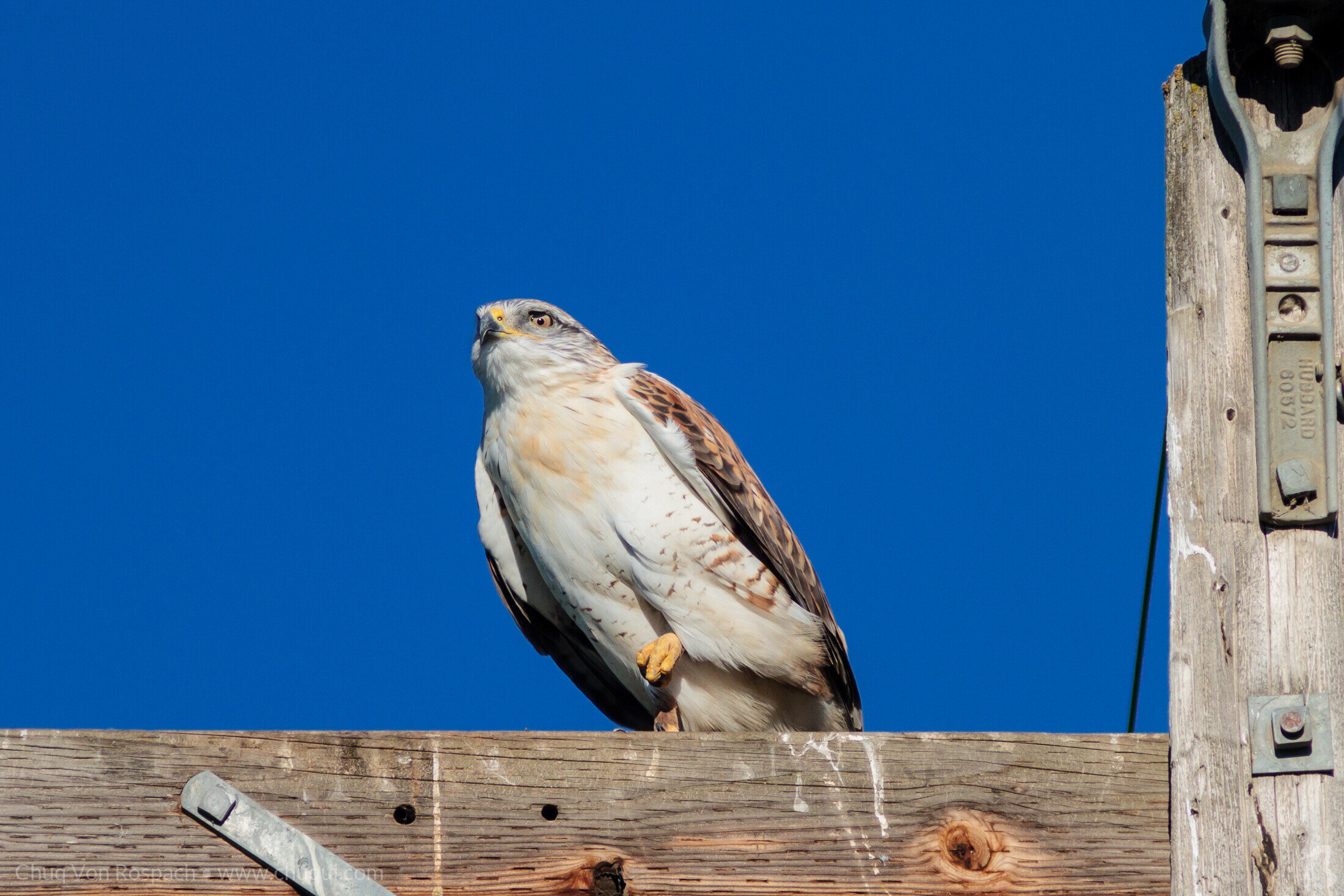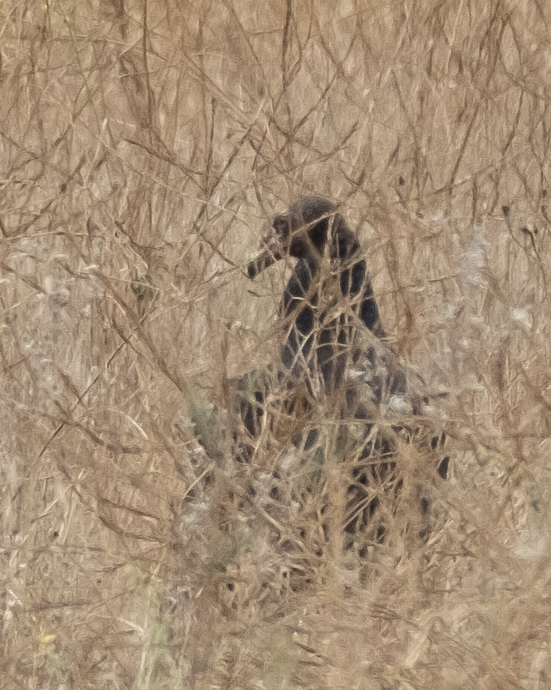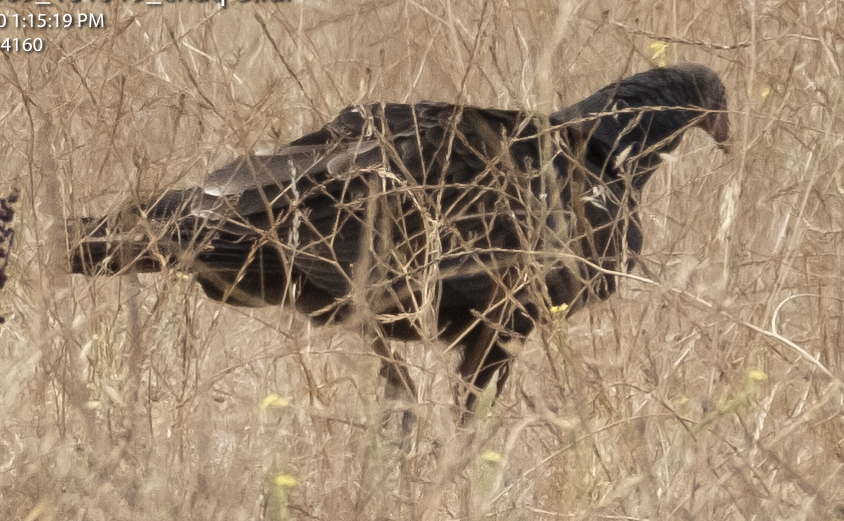Birding 101: Thinking through a bird ID
I actually got out and birded three times (three times!) last week, which was kind of awesome, but it also reminded me how rusty I am at things that go rusty if you aren’t out birding on a regular basis, like being able to bring your binoculars to your eyes and aim them at properly before the bird you’re trying to see flies off. It’s like riding a bike, though, a few wobbles and cusses here and there, and it starts getting back in the groove.
It got me thinking about the process of how I determine a bird ID, and how much it feels like how I break down and create a computer program. In many ways, bird ID is a flowchart of choices you make on the (ahem) fly to help you eliminate as many options as possible so you can focus on the necessary details needed to separate the remaining choices from each other.
I think this is one reason why I see so many people in the tech industry become birders as they get older — it’s not only an opportunity to be outside and get some exercise while doing something fun, it seems to exercise our analytical brain cells in ways that many of us find fun and interesting.
To give you a couple of examples, here are my thought processes for a couple of birds I ran into in the last week.
Prairie Falcon, Coyote Valley OSP
Coyote Valley OSP is one of my favorite birding spots in the winter when the winter raptors are in town, and can be fun much of the year, although in summer it gets hot, dry and kinda boring although it’s 12 months the best and easiest place in the county to see one of our most popular species, the Yellow-Billed Magpie. I hadn’t been there for a while, but I figured I’d give it a shot and see if it was waking up from the summer blahs; and even in summer, it’s still both a nice place for raptors (including fairly reliable Golden Eagles) and a great place for accessible birding, since you can do a lot without ever needing to leave the parking lot. I always seem to hang out in a camp chair behind the car and sit and see what wanders by.
Birding was actually fairly slow, but it was a nice day to just sit outside and pretend to be birding, so I didn’t mind. At one point, though I saw the outline of a bird flying into the Preserve in a fairly straight line and at a decent speed. It was between me and the sun, so all I could see was an outline and no detail — but the wings were sharp and pointed, which immediately had me thinking — falcon.
Raptor Resource Project has a nice graphic showing the outlines of different types of raptors. The most common raptor in the area, the Red-Tailed Hawk, is a Buteo. Falcons are a different family, Falco. In outline, have fairly large wings in proportion to the body, and those wings are optimized for longer, soaring flights while conserving energy. Falco is very streamlined and aimed for shorter, faster flights with maneuverability. The master of this, the Peregrine Falcon, can achieve over 200 miles and hour in a dive. Red-tailed hawks never seem to be in a hurry, and they will often wander and weave around in the air currents, where falcons are more likely to straight line through. This bird was doing the straight line at a fairly high altitude, but the behavior and the wing shape both clearly pointed to a falcon of some sort. But which one?
With no visible detail because of the backlighting, my mystery bird my mystery bird would have remained a mystery, but while I was watching it, something on the ground caught it’s attention, so it pulled up and started circling. It circled overhead three times, giving me a chance to get a nice look at it, and putting the entire bird in good light during the loops. By this time the brain is chugging away — the likely birds for that place and date would be Red-Tailed (95% of the birds), Ferruginous Hawk (we get < 5 in a given winter, but we seem to have them every winter, and I’d heard they were around already), Peregrine Falcon, American Kestrel, Prarie Falcon and Merlin. It’s too early for the Merlin’s to have arrived so I set them aside. My thought on size had this a larger bird, which ruled out kestrel (but please see my Judging Size in the Field will make you Cry for some necessary caveats on judging size). Having watched Peregrines on a number of occasions, I felt like this bird was a bit slow to be one (but couldn’t rule it out).
So the happy voice in the back of my head is starting to yell It might be a prarie falcon! at me. I was trying to ignore it because it was too soon to call, but the thought was definitely there. But how to tell?
As the bird started circling, I got a good look at the head and face. No helmet, so that rules out Peregrine. No sign of a belly bar, which rules out Red-Tailed hawk (Red-tails, even the lighter morphs, have some visible brown on the stomach). The chest is very white and plain but with some visible brown streaking. I’ve now ruled out kestrel, and my brain is screaming FALCON! but I haven’t ruled our Ferruginous and it’s more common here than Prarie. It’s possible to mis-judge the wing shape (although I know I haven’t), and so I’m looking for some other detail to nail it down. The bird has brown streaking on the chest The Ferruginous (lighter morph). has some streaking near the head but not down across the chest. I sat down with my field guides to compare the species, and that to me confirmed what I had, which is the Prarie Falcon. Yay me.
As I looked up from my field guides, I saw the falcon exit his loops and fly off in the same direction he was going when he arrived.
Turkey Vulture, Joseph D. Grant Park
My next trip out was to Joseph D. Grant County Park, which had been threatened by the fires but mostly untouched. I was curious how it looked and what the bird activity might be there. While there, I ran into a group of turkey vultures on a carcass of something that I couldn’t seen in the brush. And in the Turkey Vultures, I noticed this bird (with a turkey vulture to the right of it for comparison).
So, here we have a weird bird. It’s a vulture, but without the red head. Could it possibly be a black vulture, which are incredibly rare in California (I checked eBird and Black Vulture hasn’t been reported going back to 2015 when I stopped looking). This bird required more study. So I hauled out my field guide and looked at the notes on the two vultures, all of which showed the turkey vulture with that bright red head. I took photos. I studied the bird. I looked at the field guide some more. And then I left it for later when I could study the bird photos at magnification at home with my other field guides. And spoiler warning, I’m about to make a mistake.
I get home, I load the photos up on the computer and check things out. I compare the bird with the field guide. I ponder. Somewhere my brain has decided this could be a Black Vulture. If it is, I want to get word out quickly to give other birders a chance to see and confirm it. So I load up the photos you see above and pass them along the county birder network with the question “I think this might be a Black Vulture. Is it?”
I very quickly get a number of replies, which unanimously shoot down that idea — because it is, of course, an immature/juvenile hatch year Turkey Vulture. When they’re really young, they haven’t gotten the red color yet.
So how did I end up in the wrong place here? it’s a great example of how you can end up messing up for all the right reasons. The big one: I let my enthusiasm for this could be a really big find! beat out my cautious but I better get it right first part of my thinking. The field guide was part of that: I carry two field guides on my phone and iPad for use in the field. The one I use most often is iBird Pro, which I like because it has both illustrations and photos for each species. The other is the Sibley app companion to the printed Sibley Field Guides, which show illustrations.
As a photographer, I tend to prefer photographs in my ID research because it’s how I think and view birds much of the time, which is why iBird Pro is my primary app. That app has its limitations, though — it is often not nearly as complete in it’s definitions, especially when it comes to immature/juvenile birds, and the photos are crowd sourced, so they can’t be trusted to be complete. Under most circumstances, though, it works fine for me.
And — of course — their area for Turkey Vulture doesn’t have any coverage of immature birds. And in my enthusiasm, I didn’t think to dive into other field guides before reaching out with my photos for feedback. Because if I had, the Sibley Guide would have shown me this
From: Sibley Field Guides
and I wouldn’t be writing about how I got excited and jumped the gun and tried to turn a baby turkey vulture into a black vulture. Whoops. But quickly fixed and before I caused any serious havoc by sending out a false alarm.
Lessons Learned
So… if you’re a non-birder or new birder it might seem all the little details and nuance you have to consider can be overwhelming: and it is. As a new birder, I made many many enthusiastic and well-intentioned mistakes. It’s part of birding, because this is all wonderfully complex and nuanced — or as I like to say, if this was easy, we’d all be bored and off doing something else. But the chase and the challenges can be part of the attraction, and as you bird more and see more birds and start to learn how to see the details and what to look for, it opens up into this vast world of interesting challenges. You can keep it simple or get as nerdy as you want to — but it takes time and it takes patience to grow your expertise.
Even more experienced birders make mistakes, which is one reason we tend to ask each other for confirmation and advice on things. Having birded seriously for 15 years now, I’m not close to perfect, but I have gotten a lot better at understanding where my limitations are. It’s when I ignore those and tread past the yellow warning tape anyway that things like this vulture happen, and I think to some degree, part of why I did that was that I’ve had limited birding time during the summer and so my skills are a bit rusty.
The field guide was part of it as well; I know its coverage is incomplete in some ways, but most of the time it does a good job for me. This was a case where I really should have pulled out the Sibley guide, too, and if I wasn’t rusty and chasing my enthusiasm for the special bird I would have. But if the iBird had covered the juvenile bird at all, it would have been obvious to me. Ultimately it’s my problem for not doing more research, but having my field guide show me nothing but bright red heads allowed me to feel like I could short circuit the research, and I should know better.
There is an entire discussion to be had — within birding it’s more of a religious war, actually — about field guides and whether illustrations or photos are better. A general consensus on that would be that beginners tend to prefer photos where more experienced birders prefer illustrations, and that makes sense to me, although my photography background also plays a part in why I still prefer photos. My 2nd guide is Sibley’s specifically because it is much more complete and covers juvenile birds and alternate plumages and other details much better. For me, there’s a time and a place for both types of guides.
I do think catching the Prarie Falcon — an ID which, to be honest, I never would have been comfortable making two years ago — had me feeling confident about my birding. To then mis-read a baby Turkey Vulture punctures that balloon, which needed, and grounds me back to the reality that with a weird bird (and most juvenile birds are weird to some degree and rarely will field guides completely handle all of the possible variations) I need to slow down and be thorough and not jump at an ID too quickly.
And that’s something birding is really good at: keeping you challenged — and a bit humble. I love that about it.
You’re never going to get it right every time, but I’ve found the way to get better, is to try your best to ID things before asking someone else for help — and then go back based on that help to research what you got wrong or missed, to help you understand how to do it better next time. A lot of birders I see give up on the ID after a cursory look and ask for help — which we give happily — but I think if we spent more time pondering and researching, we’d all progress in our experience a bit faster. But in many ways, it all comes down to which parts of the endeavor you find fun and interesting. Do those bits and don’t worry about the rest or what anyone else tells you. Including me.
Just for fun
And just for fun, here are a couple of photos from my trip to Grant Park, which was the first time where I spent any significant time with the camera in months, and again, started out really rusty, but by the end, I could start feeling myself getting into the groove again…











